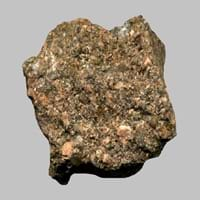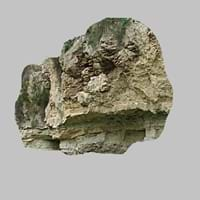Definition
Arkose is a sedimentary rock, specifically a type of sandstone containing at least 25% feldspar
A water-soluble mineral sediment resulting from concentration and crystallization by evaporation from an aqueous solution
Discoverer
Alexandre Brongniart
Usiglio
Etymology
From Auvergne region of France used by a French geologist Alexandre Brongniart in 1826 who applied this term to some feldspathic sandstones
From a sediment left after the evaporation
Class
Sedimentary Rocks
Sedimentary Rocks
Sub-Class
Durable Rock, Hard Rock
Durable Rock, Soft Rock
Group
Not Applicable
Not Applicable
Other Categories
Coarse Grained Rock, Opaque Rock
Coarse Grained Rock, Fine Grained Rock, Medium Grained Rock, Opaque Rock
Color
Reddish Brown
Colourless, Green, Grey, Silver, White
Durability
Durable
Durable
Appearance
Rough and Dull
Glassy, Vesicular and Foilated
Interior Uses
Decorative Aggregates, Homes, Interior Decoration
Decorative Aggregates, Entryways, Flooring, Homes, Interior Decoration
Exterior Uses
Paving Stone, Office Buildings
As Building Stone, As Facing Stone, Garden Decoration, Paving Stone
Other Architectural Uses
Whetstones
Curbing
Construction Industry
Cement Manufacture, Construction Aggregate, for Road Aggregate, Production of Glass and Ceramics, Raw material for the manufacture of mortar
As a Flux in the Production of Steel and Pig Iron, As a Sintering Agent in Steel Industry to process Iron Ore, As Dimension Stone, Cement Manufacture, for Road Aggregate, Making natural cement, Manufacture of Magnesium and Dolomite Refractories
Medical Industry
Not Yet Used
Taken as a Supplement for Calcium or Magnesium
Antiquity Uses
Artifacts, Sculpture, Small Figurines
Artifacts
Commercial Uses
In aquifers, Soil Conditioner, Source of Magnesia (MgO), Tombstones
Used in the manufacture of Ceramic Powder, Used in the preparation of Sulfuric Acid and Silicon Diborite
Types
Not Available
Not Available
Features
Available in Lots of Colors and Patterns, Generally rough to touch, Is one of the oldest rock
Generally rough to touch, Splintery, Veined
Archaeological Significance
Monuments
Not Yet Used
Not Yet Used
Famous Monuments
Not Applicable
Not Applicable
Sculpture
Used
Not Yet Used
Famous Sculptures
Data Not Available
Not Applicable
Pictographs
Not Used
Used
Petroglyphs
Not Used
Used
Figurines
Used
Not Yet Used
Formation
Arkose rock forms from the weathering of feldspar-rich igneous or metamorphic rock, most commonly granitic rocks, which are primarily composed of quartz and feldspar.
Evaporite is water-soluble mineral sediment which forms from concentration and crystallization by evaporation from an aqueous solution.
Mineral Content
Calcite, Clay, Clay Minerals, Feldspar, Micas, Quartz
Calcite, Cancrinite, Gypsum, Kyanite, Magnetite
Compound Content
Aluminium Oxide, CaO, Iron(III) Oxide, Potassium Oxide, MgO, Sodium Oxide, Silicon Dioxide
CaMg(CO3)2, CaO, Calcium Sulfate, KCl, MgO, NaCl
Types of Metamorphism
Not Applicable
Burial Metamorphism, Cataclastic Metamorphism, Contact Metamorphism, Impact Metamorphism, Regional Metamorphism
Types of Weathering
Biological Weathering, Chemical Weathering, Mechanical Weathering
Not Applicable
Types of Erosion
Coastal Erosion, Glacier Erosion, Water Erosion, Wind Erosion
Not Applicable
Grain Size
Coarse Grained
Medium to Fine Coarse Grained
Fracture
Conchoidal
Conchoidal
Porosity
Highly Porous
Less Porous
Luster
Dull
Subvitreous to Dull
Compressive Strength
Not Available
Cleavage
Not Available
Perfect
Toughness
Not Available
Not Available
Specific Gravity
0
2.86-2.99
Transparency
Opaque
Translucent
Density
Not Available
2.8-2.9 g/cm3
Specific Heat Capacity
Not Available
Resistance
Heat Resistant, Impact Resistant, Pressure Resistant
Heat Resistant, Pressure Resistant
Deposits in Eastern Continents
Asia
China, India, Kazakhstan, Mongolia, Russia, Uzbekistan
Not Available
Africa
Namibia, Nigeria, South Africa
Not Available
Europe
Austria, Denmark, Germany, Great Britain, Netherlands, Norway, Poland, Sweden, Switzerland, United Kingdom
United Kingdom
Others
Greenland
Not Yet Found
Deposits in Western Continents
North America
Canada, USA
USA
South America
Brazil
Colombia, Paraguay
Deposits in Oceania Continent
Australia
New South Wales, New Zealand
Central Australia, Western Australia










